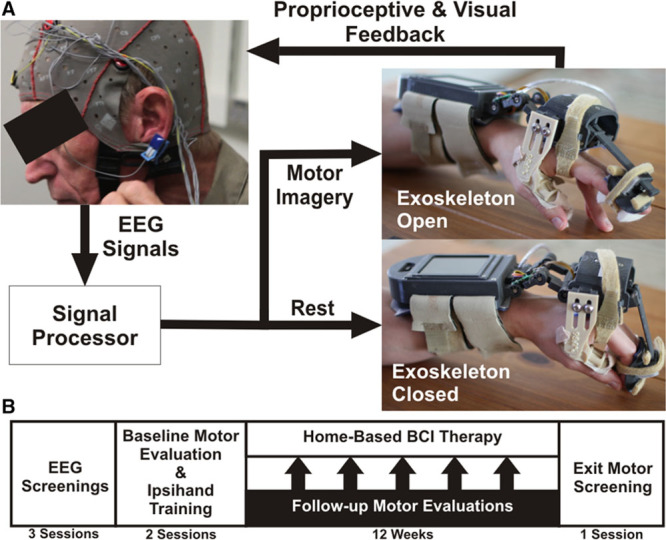Figure 1.

Study methodology. A, The exoskeleton used attached to a patient’s affected hand via straps on the forearm, palm of the hand, and intermediate phalanges of the index and middle finger, whereas the thumb was held stationary. The exoskeleton was controlled by a microprocessor in the forearm assembly that processed electroencephalographic (EEG) signals. A linear actuator drove hand movements in a 3-finger pinch grip based on the decoded EEG. B, The study tested whether training with the brain–computer interface (BCI)–controlled exoskeleton would lead to functional improvements. Patients that met the inclusion criteria completed 3 EEG screenings. Patients with consistent movement-related EEG activations then completed baseline motor evaluations and BCI system training. Finally, patients completed a 12-wk home-based BCI protocol with follow-up motor evaluations at 2-wk intervals.
